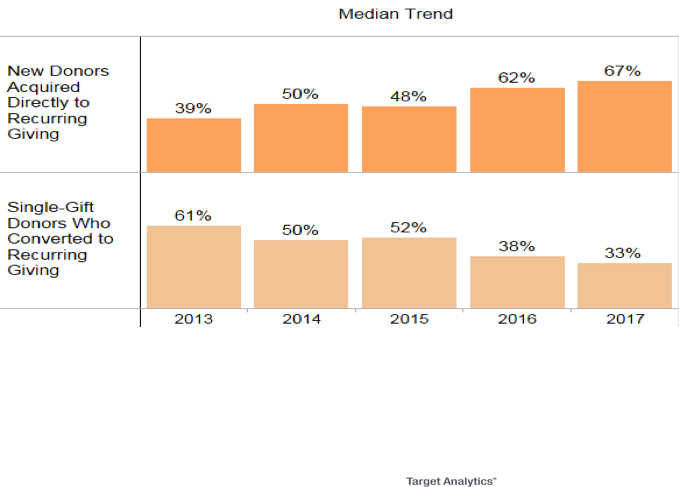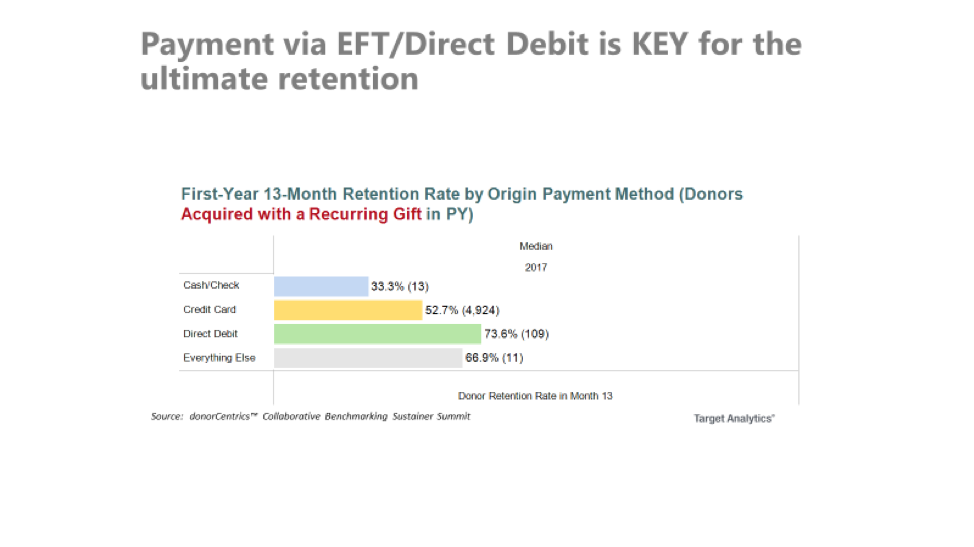Face-to-Face Sustainer Asks Are Growing in the US
This week’s guest blogger, Erica Waasdorp, is President of A Direct Solution and is
In the US, Face-to-Face fundraising often means personal asking, as in meeting a donor and asking for a big gift.
The Face-to-Face (F2F) I’m discussing today is different (at least for the US market). It’s known as canvassing, street fundraising, or door-to-door fundraising. It’s typically focused on generating monthly donors (sustainers) in well-trafficked areas, street corners, shopping malls, and other busy places.
When I was managing a big monthly giving program for an international animal organization, I was not a fan of Face-to-Face fundraising to generate sustainers at all. I had heard from other organizations that F2F retention rate was low, which concerned me. And frankly, our organization was quite successful in bringing in new sustainers — and they stayed longer if we just used direct mail and phone.
Then the internet and social media came into the picture. The ability to reach donors by phone has become harder … but F2F has picked up the ball! In the past few years, F2F (and door-to-door) counts of new monthly donors has grown by 42%! Median sustainer revenue has grown by 54%!
One big reason F2F has become more popular is because you’re bringing in new donors making monthly gifts to your organization right away!
We used to try to convert donors to give monthly later, but now organizations are starting to generate new monthly donors right off the bat. They bring in more loyal donors right away. You can see here that while the percentage of new straight-to-monthly donors is going up, the share of single-gift donors who become monthly is going down:

Virtually all organizations that are doing F2F in the US only ask for monthly gifts. Some still accept one-time donations, but others don’t — they really want to generate as many long-term donors as possible and that one-time gift option deters that goal. It’s a matter of testing what works best for your organization.
The second reason F2F is growing is it brings in younger donors. Isn’t that what everybody is looking for? And the average monthly gift is on par with other donor acquisition channels.
F2F is not for everybody. It takes a committed organization and committed canvassing organizations that are willing to work with you. Not on just the front-end in bringing new monthly donors in but is also willing to work with you on improving the retention.
The less siloed you are as an organization, and the more all departments and fundraisers can work together, the better off you are.
Sustainer Retention Rates grow as organizations stay with it
The average retention rate for F2F monthly donors is 33% (2017). That’s the lowest for monthly donors of all channels. But it’s nearly twice that of new one-time donors brought in by direct mail — which is currently 19%.
As you’re looking at this, don’t be too shocked. It’s important to remember two things:
- As new organizations are starting to get their feet wet with this F2F, they’re still trying to figure out what to do next to improve retention. This lowers the median trend percentage.
- Those organizations who have been running F2F programs for a longer period are seeing much higher retention rates. They’ve ‘cracked the code’ on sustainer retention. The top F2F monthly donor organizations are retaining these donors at better than 80%!
Another issue is that the US still lags behind in the acceptance of Electronic Funds Transfer (also called ACH or direct debit). The bulk of monthly gifts here come in from credit or debit cards. But EFT is growing and slow and steady wins the race. Just take a look at the current retention rates by type of payment.

A systematic conversion program once the sustainer is on board is the name of the game. It’s up to you to welcome the donor the right away and in the most personal way possible: Videos and welcome calls, and providing impact and engagement right away, while also working on improving retention.
Most canvassing agencies will help you. They have great systems. They’ll work with you and ensure immediate follow up with donors about any missing or wrong info. They’ll work to prevent future drop offs.
F2F still has plenty of room for growth
F2F is easiest if you have an enticing mission that’s easy to explain. And as competition grows and as more organizations are jumping on the F2F bandwagon, you can imagine that it’s harder to find spots where it’s just you canvassing the streets for new potential monthly donors.
Thanks to the sharing within The Professional Face to Face Fundraisers Association, there will be better regulations and guidelines for canvassing locations, help with sustainer acquisition and back-end and retention. We are all still learning in this area and I don’t think that will ever stop!
There’s clearly a spot for F2F fundraising in the US. And everybody — agencies and nonprofits alike — are actively collaborating to increase sustainer sign up AND retention rates.
And it’s starting to work. Because who doesn’t want committed donors?
Read also:
- How You Can Have Your Own Ice Bucket Challenge-like Success
- How Can I Get More Monthly Donors Without a Big Budget?
Learn more about the often-surprising ways we connect with donors by taking our most popular online course, Irresistible Communications for Great Nonprofits. It’s available for members of The



5 Comments. Leave new
Fantastic! It is great news that F2F is increasing in USA. In many other countries it is actually the predominant acquisition method – like here in Australia, where Pareto BenchmarkedEF charities have more than 40% of donation value from individual donors from F2F! It beats direct mail 4 times!
We had a similar pattern when large volumes embraced credit card over automatic debits, but as the numbers increased we found the retention rates become more similar. My theory is that early debit customers had to work harder, so were more dedicated.
I have noticed that in direct marketing – lower volumes of donors by any channel usually have ‘better’ stats than higher volumes. But as you increase volumes the difference decreases. In other words – if you get more direct debit monthly givers, you will notice average retention becomes similar to the credit card retention.
Great article Erica, there is definitely a huge opportunity for Non-Profits in the United States to benefit from face to face fundraising. Thanks for emphasizing the role of the PFFA as well. Growth is excellent, but it needs to be sustainable, and the role of the PFFA in providing a set of standards and a forum for organizations to collaborate is absolutely essential for sustainability.
Great article Erica. Thanks for sharing.
Hi! What numbers are you using to calculate the retention rates?
‘The average retention rate for F2F monthly donors is 33% (2017). That’s the lowest for monthly donors of all channels. But it’s nearly twice that of new one-time donors brought in by direct mail — which is currently 19%.’
Ours is much higher, but maybe I’m using different numbers to calculate retention.
Retention rate is the percentage of donors who gave last year who gave again this year. Those years can be any two adjacent 12-month periods. The retention rates of different types of donors are all over the map: As Erica points out, only 19% of one-time direct mail donors give in the following year. But the retention rate of monthly donors recruited by direct mail is often higher than 90%. The industry average retention rates are considerably lower than what you can expect to get if you do everything right!